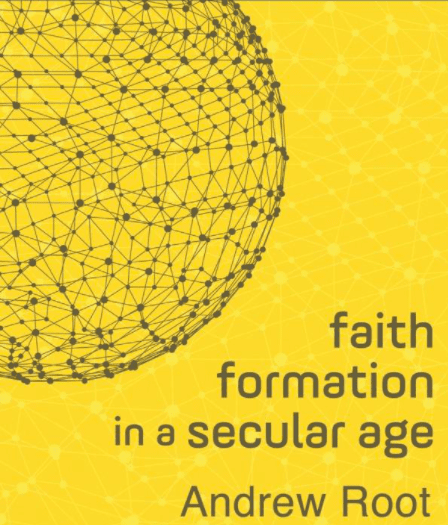 How did we shift from the age of duty, obligation, and conformity to the age of authenticity? I remember once reading two books — one by David Wells and one by Brian McLaren — about the same time with the same fundamental conclusion: we need to be authentic. What, however, did authentic mean?
How did we shift from the age of duty, obligation, and conformity to the age of authenticity? I remember once reading two books — one by David Wells and one by Brian McLaren — about the same time with the same fundamental conclusion: we need to be authentic. What, however, did authentic mean?
When Charles Taylor speaks of the age of authenticity he speaks of the 60s generation understanding authenticity as being true to oneself. But that move from obligation to authenticity entailed some huge, huge shifts in our culture.
So Andrew Root, in his new splendid book Faith Formation in a Secular Age. The genius of Root’s book is that he opens up Taylor for church life, for the pastoral life, for the professor’s life — yea, for the life of each of us. We are all absorbed now in an age of authenticity.
It begins with understanding the post WW2 generation as an age of conformity in what becomes mass society. Education was the diet and it was designed to prepare students for gray suits and moms at home and homes the same size in conforming neighborhoods. Stereotype, but with a core truth to it all. Duty to economic prosperity was the game played. Education was how you learned to play it well.
Suddenly in the 60s, however, conformity was under attack, obligation was seen as oppression, the mass society subjected to some kinds of critique, including Marxist critical thought and Freudian critical thinking. The place this played out was the university where professors and students combined to turn against the age of obligation and duty and to see it as oppression.
The consumerist theme so dominant in the post WW2 age of obligation was revealed for what it was: planned obsolescence. National Socialism in Germany revealed what happened when oppressive forces demanded obligation and conformity.
1965: ML King Jr oppositions unmasked the corruption of the authorities demanding conformity; Berkeley students wanted free speech and learned not to trust anyone over thirty and opposition was fascist.
Freud game them a language: the Id was the child’s desire and genuine freedom and authenticity; the Superego the system demanding conformity; the Ego the umpire attempting to get the Id to do what was acceptable. Youthfulness was Id and the age of obligation the Superego. Teenagers were in paradise; be youthful forever was the question; joining the system was oppressive. Teenager years were the best days of our lives. To be authentic is to indwell the Id.
Sexual freedom became the sign of the Id being authentic. The system, The Man, was oppressive, it was the Superego generating neuroses.
Mass society then played into this. How so? it taught that consumerism and economic booms would only continue if desire became the operative word and they appealed in ads to the youth. Desire has to be central to propagate mass society of consumerism.
Authenticity, living the Id, living one’s desires, being true to yourself no matter what, was tied to youthfulness.
Churches followed suit: they began to appeal increasingly to youth culture. “Give them what they want or we’ll lose them.” At work in the youth culture of authenticity, however, was an anti-system, a refusal to conform, and a counterculture.











